Caught on camera - the secret wildlife of the Kalahari
Feline Fields Lodge's new camera trap is capturing amazing footage
The Kalahari may seem barren at first glance, but a closer look reveals an ecosystem pulsing with life and resilience where each species plays a critical role in a finely tuned environment. And our brand-new camera traps at Feline Fields Lodge are showing us just how much goes unseen, revealing new facets of this incredible place. Exploring the Kalahari with us is more than just a journey into an untamed land - it’s an invitation to witness survival at its most raw, and encounter wildlife that thrives against the odds. Let's find out more...
When we built Feline Fields Lodge, we knew that it would never compete with the rich diversity of life found in the Okavango Delta or other, more wildlife-dense regions of Botswana. We created what we believed would be a remote haven of tranquillity, packed with activities and experiences that you struggle to find elsewhere. But (and it's a big BUT!) the moment we created our permanent waterhole and supplied it with fresh water (as opposed to the local, brackish desert water that's high in salt) we noticed a huge change in the amount of species we were seeing in and around the lodge.
Over the last year guests have been seeing regular sightings of leopard and honey badger in and around Feline Fields Lodge, and the birdlife has been outstanding. We wondered what else may be out there in the vast Kalahari, paying us secretive visits? Installing camera traps at our waterhole was the only way we'd find out, so that's exactly what we did, just a few short weeks ago. And the results have been astounding, to say the least!
The area around the lodge is bursting with life, and as animals and birds become more and more used to our human presence and enjoy the taste of fresh, clean water, they are becoming easier to spot. So, Feline Fields Lodge may yet give Feline Fields Vintage Camp a run for its money when it comes to wildlife sightings!
This, then, is a guide to the more common animals you might see during your stay with us and that we've been seeing with our own eyes and picking up regularly on our cameras...
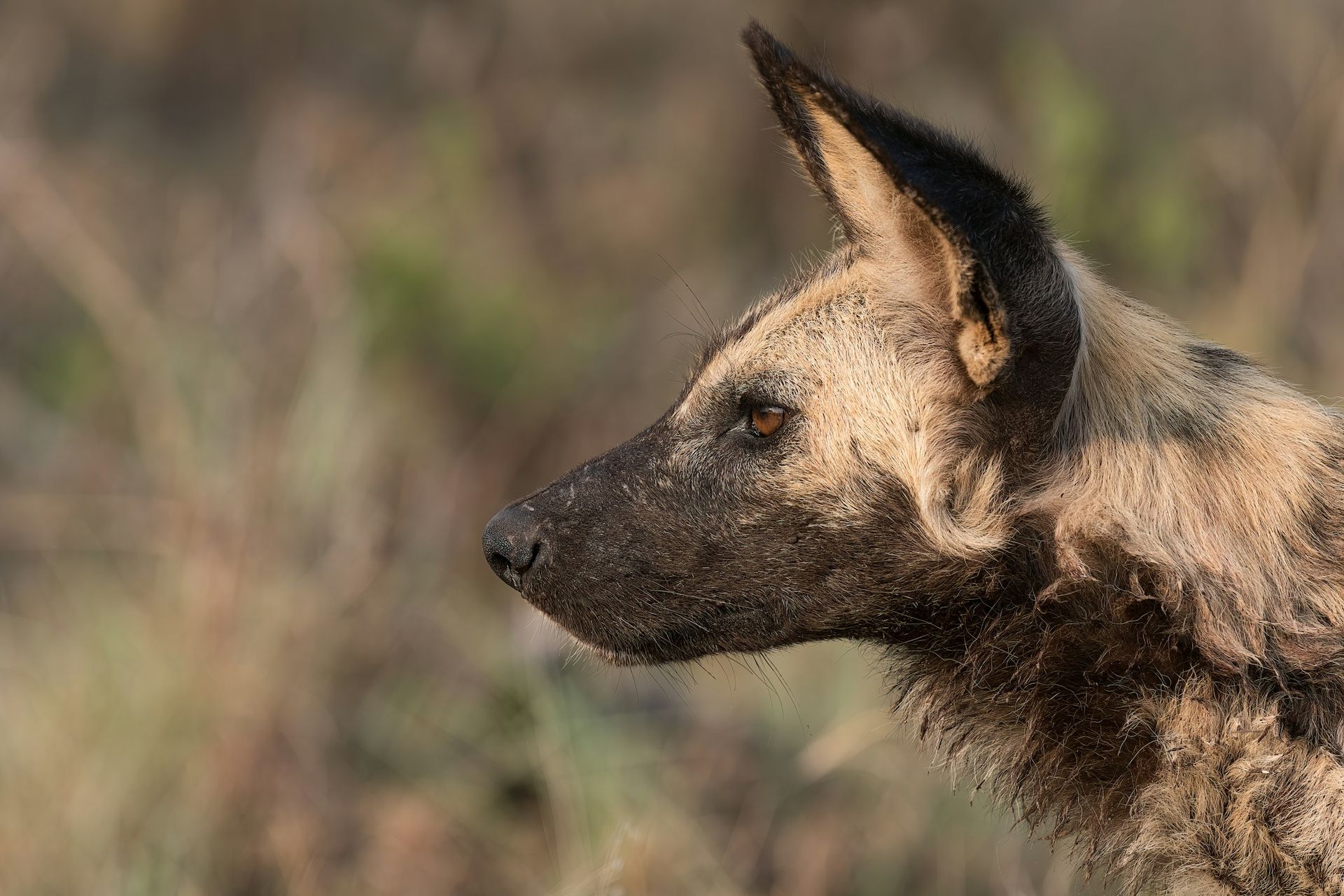
Painted wolf (African wild dog)
Once seen as a nuisance and persecuted across much of their range, painted wolves are now treasured symbols of Botswana’s conservation success stories. These social hunters thrive on teamwork, with each member of the pack playing a unique role during their high-speed chases. Characterised by their large, rounded ears, mottled coats, and relentless endurance, they’re capable of covering vast stretches of desert in search of prey, typically kudu or impala.
Sightings of painted wolves in the Kalahari often happen during the cooler parts of the day, when they are strategising and preparing for their next co-ordinated hunt. These packs are a thrill to watch, exemplifying intricate social dynamics and remarkable intelligence, a reminder of the vital role they play in maintaining the delicate balance of this ecosystem.
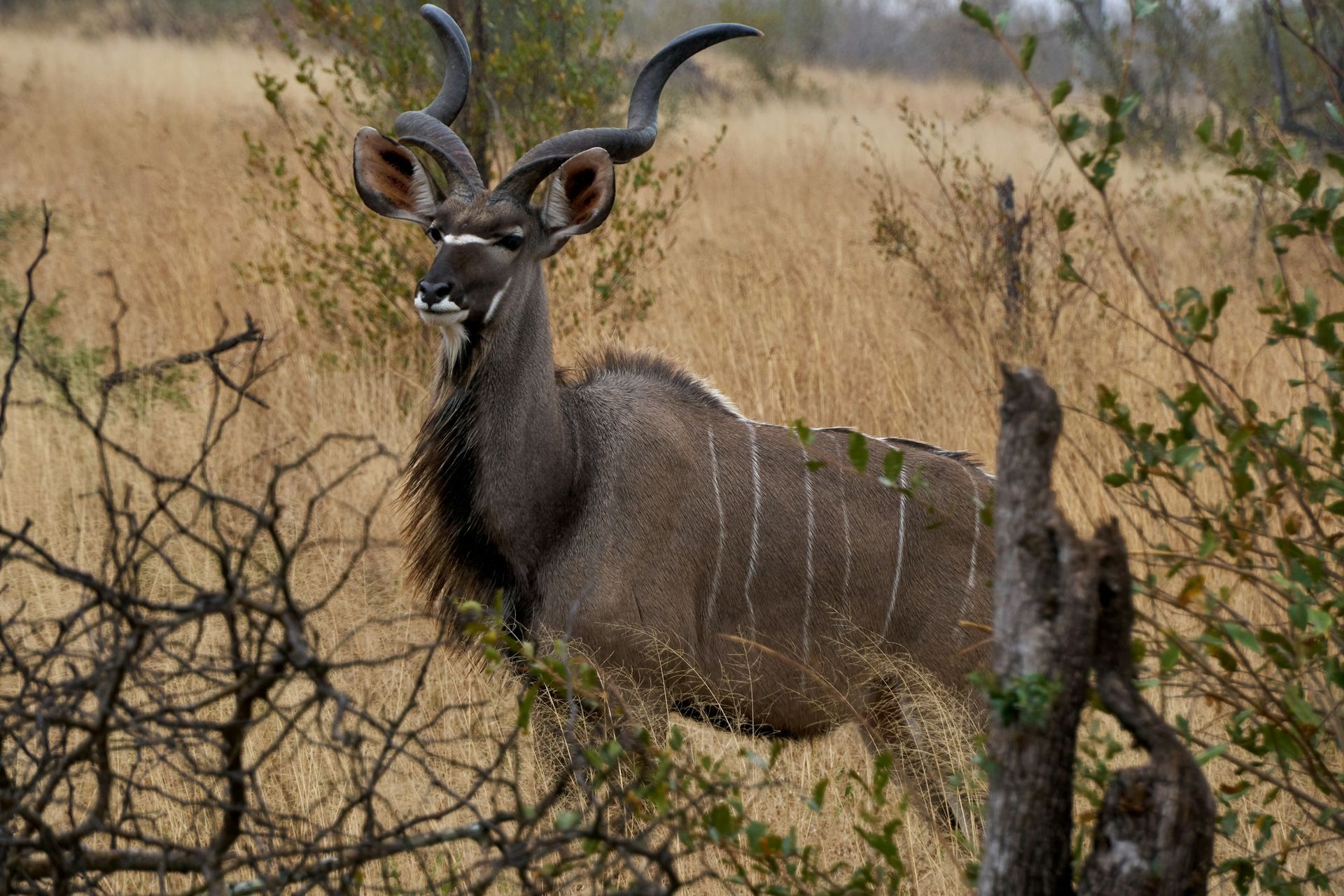
Kudu
With their striking spiral horns and sleek, striped coats, kudu are among the most graceful antelopes in Botswana. Moving through the Kalahari’s acacia woodlands and scrublands, they navigate their territory with fluid ease, browsing on vegetation beyond the reach of most herbivores.
Known for their impressive agility and their ability to jump the highest of fences, kudu are also quick to disappear at the faintest hint of predators, which makes spotting them a particular treat. Often found at the waterhole in the early morning or late afternoon, kudu demonstrate how even the Kalahari’s dry landscape offers sustenance to those with the skill to find it.
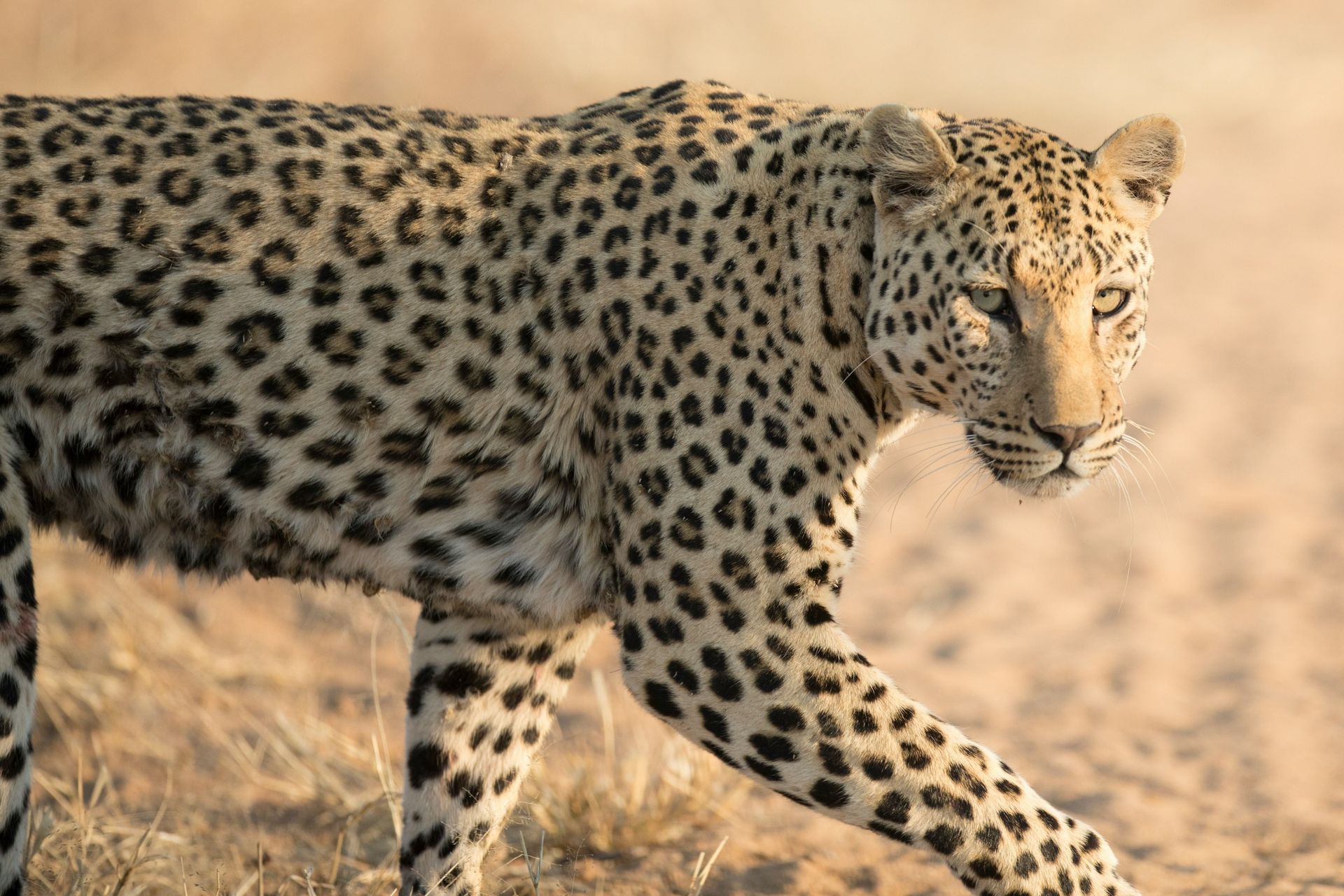
Leopard
Leopards are the silent, elusive predators of the Kalahari. Unseen until they want to be, these big cats roam the arid terrain with remarkable adaptability. Unlike their counterparts in lusher regions, Kalahari leopards are slightly smaller and lighter, which helps them survive on the limited resources available.
At our estimation, there are at least two leopards regularly traversing through the lodge grounds. They've been seen mostly at night, under cover of darkness, and even in broad daylight on the drive into the lodge and are definitely getting more relaxed to the constant human presence around them.
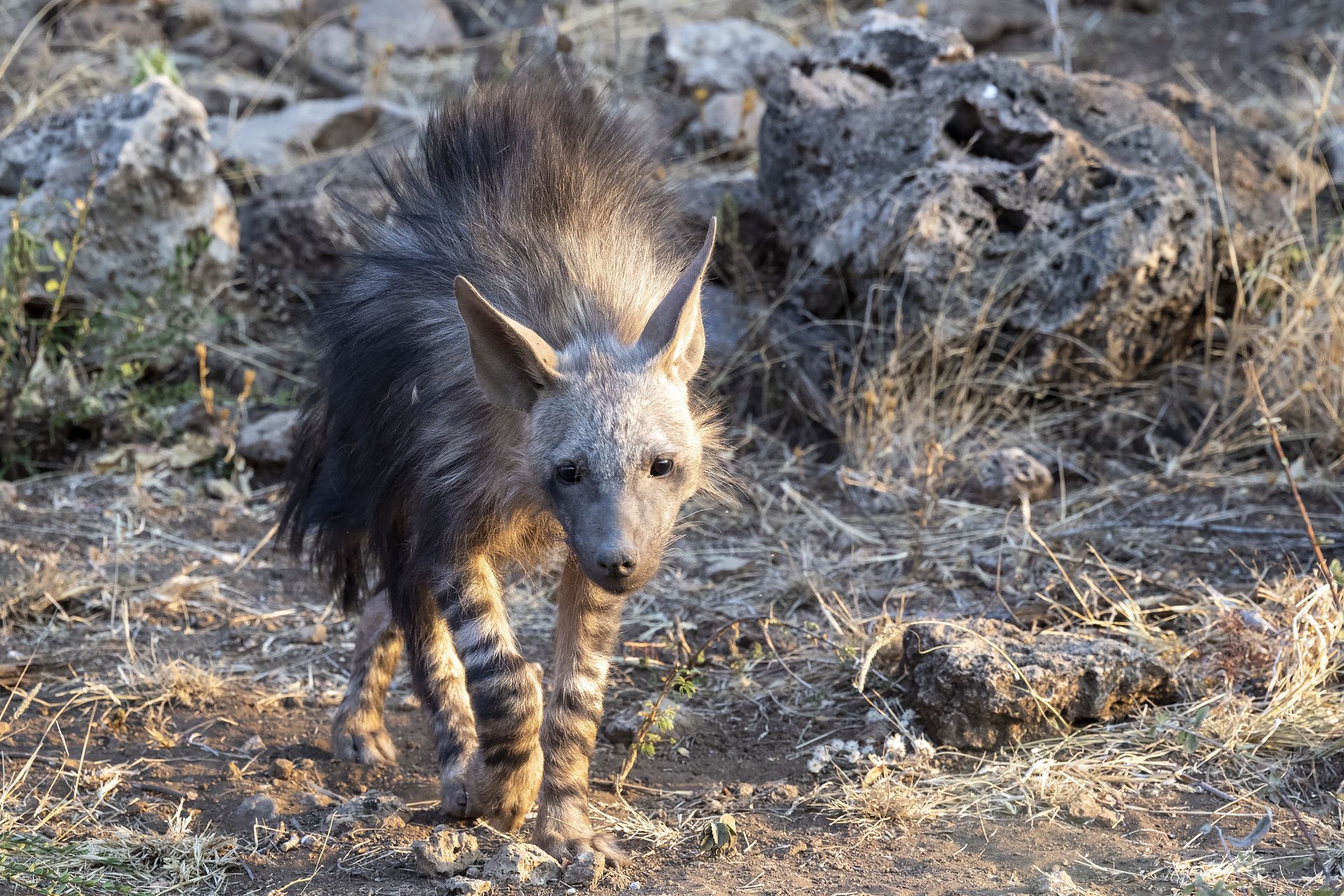
Brown hyena
Distinct from their more famous cousins, the spotted hyenas, brown hyenas are often misunderstood and underappreciated. These stocky, shaggy scavengers are solitary foragers, relying on an array of desert adaptations that allow them to travel long distances to find carrion, insects, and small mammals.
They play an important ecological role as nature’s cleanup crew, keeping the desert ecosystem healthy by reducing waste. Despite their reputation as mere scavengers, brown hyenas are efficient hunters when the opportunity arises, and supplement their diet with insects, birds' eggs and wild fruits. We've been getting regular sightings on the camera traps of them in and around the waterhole.
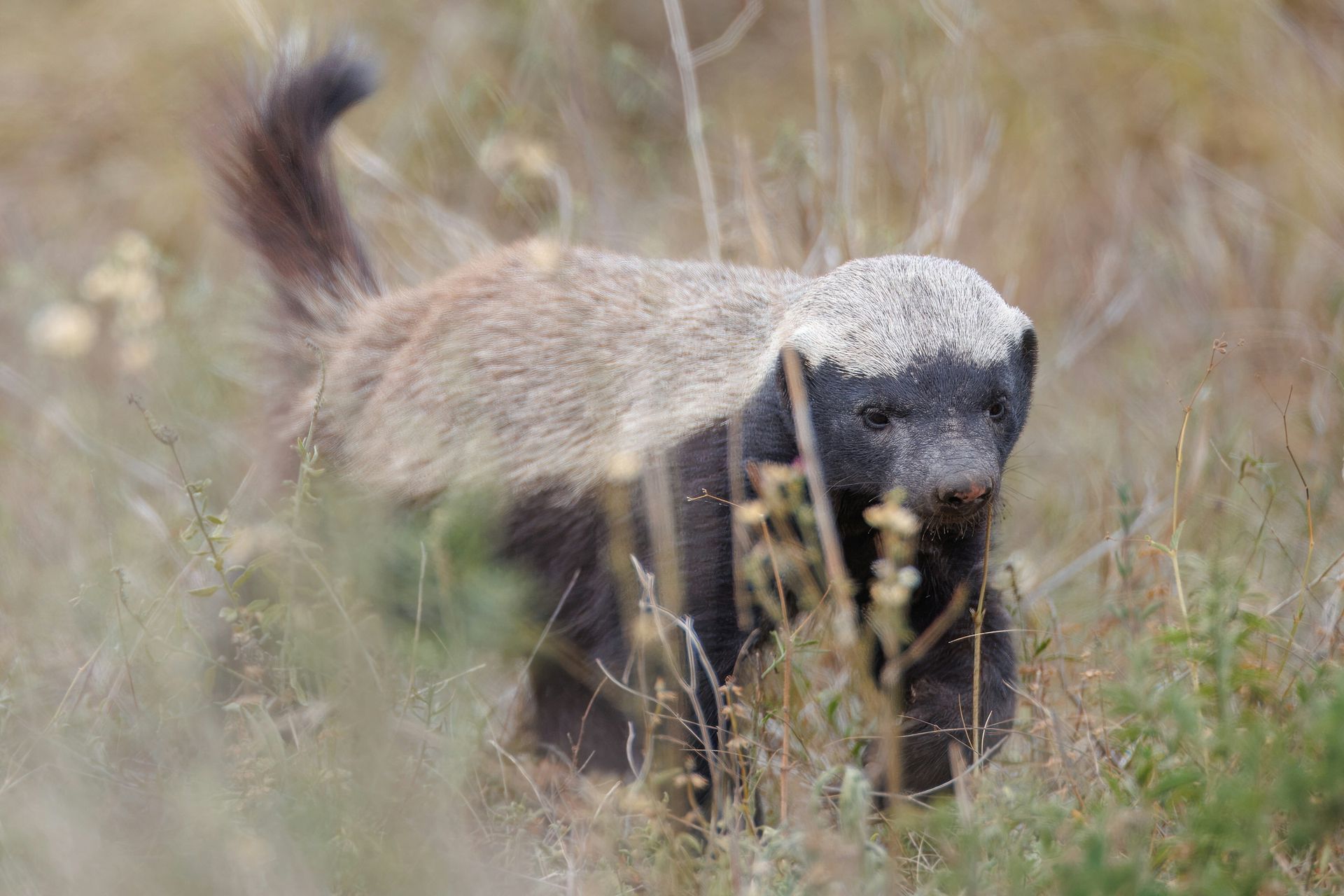
Honey badger
The honey badger’s reputation precedes it; this small yet tenacious creature embodies fearlessness in the animal kingdom. Armed with sharp claws and a thick skin, the honey badger takes on challenges few others dare face — venomous snakes included. We've been seeing honey badgers regularly in and around the lodge, mostly at night and have to say they are one of our favourite animals.
Their remarkable immunity to venom and their fierce nature are legendary and make them virtually indomitable, and they’ve rightfully earned a reputation as one of the Kalahari’s most extraordinary survivalists.
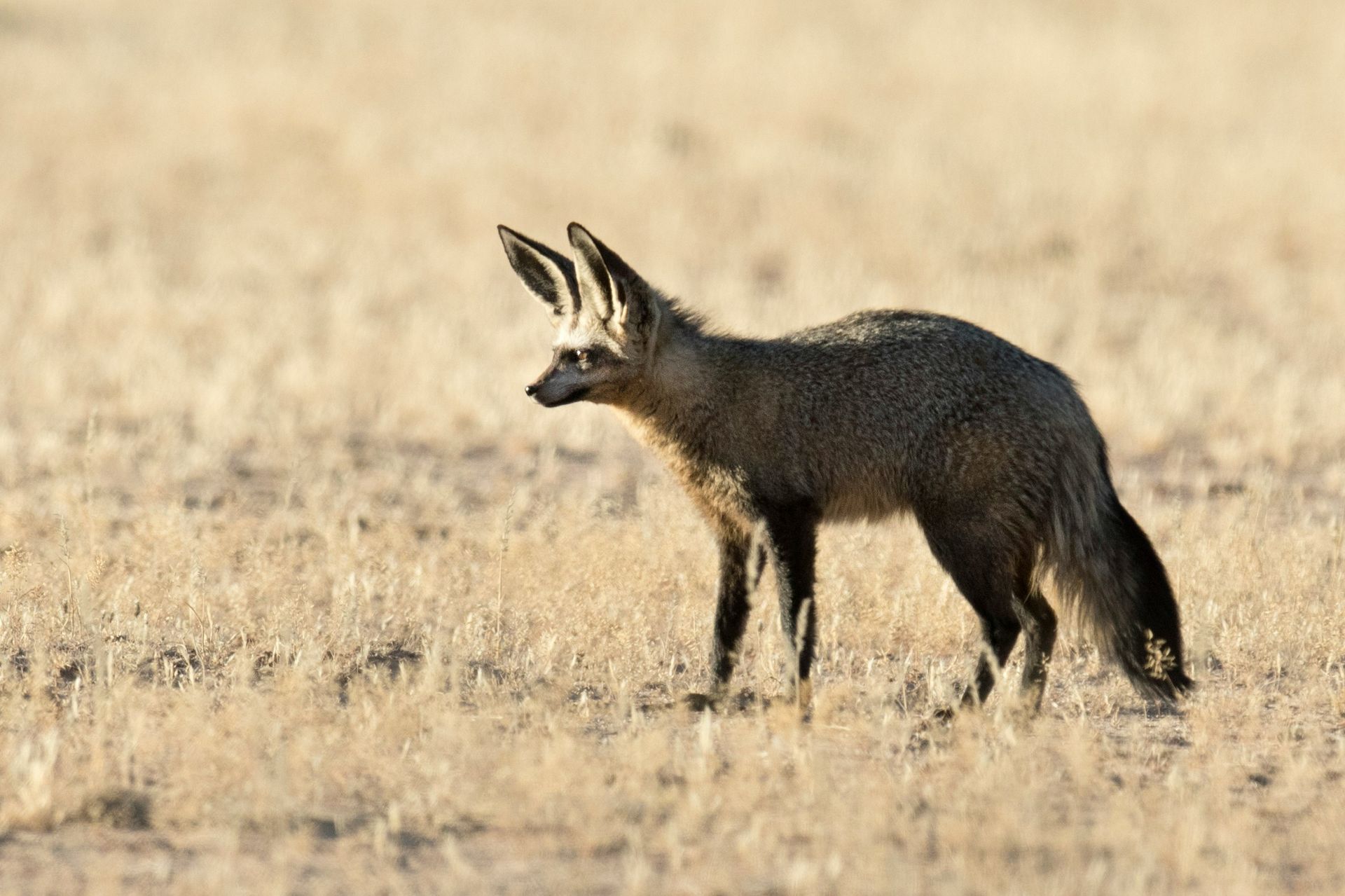
Bat-eared fox
Equipped with oversized ears and sharp senses, bat-eared foxes are the Kalahari’s insect specialists. Their distinctively large ears serve as both a hearing aid and a cooling mechanism, allowing them to detect and dig out insects from beneath the sand with ease. Primarily nocturnal, bat-eared foxes spend their days sheltering from the heat and emerge at dusk to forage.
Despite their small size, these foxes are essential in controlling insect populations, keeping pests in check and contributing to the ecosystem’s health. Spotting them is a rare treat and while we haven't yet captured them on camera, we know they're out there so it's just a matter of time!
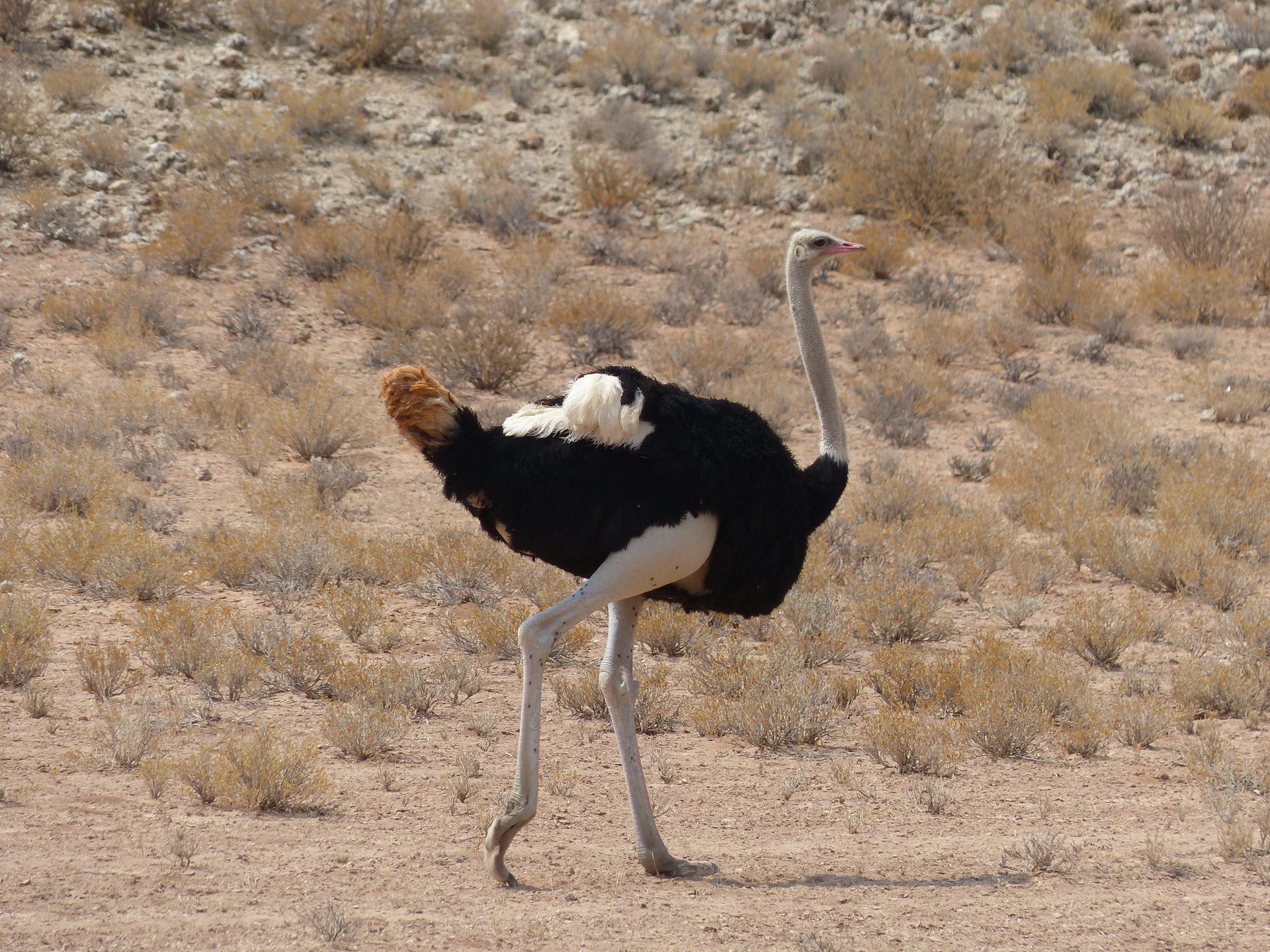
Ostrich
The ostrich is easily Africa's most iconic bird, and the world’s largest! With long, muscular legs built for sprinting across open plains at speeds up to 70 kilometres per hour, it's adapted to endure extreme temperatures, going for long periods without water, gleaning hydration from the vegetation they consume.
They thrive in the open expanses of the Kalahari, often in small groups, kicking up dust clouds as they run. We spot them regularly on the drive into the lodge from Maun, as well as on game drives and walks out into the wilderness around it.
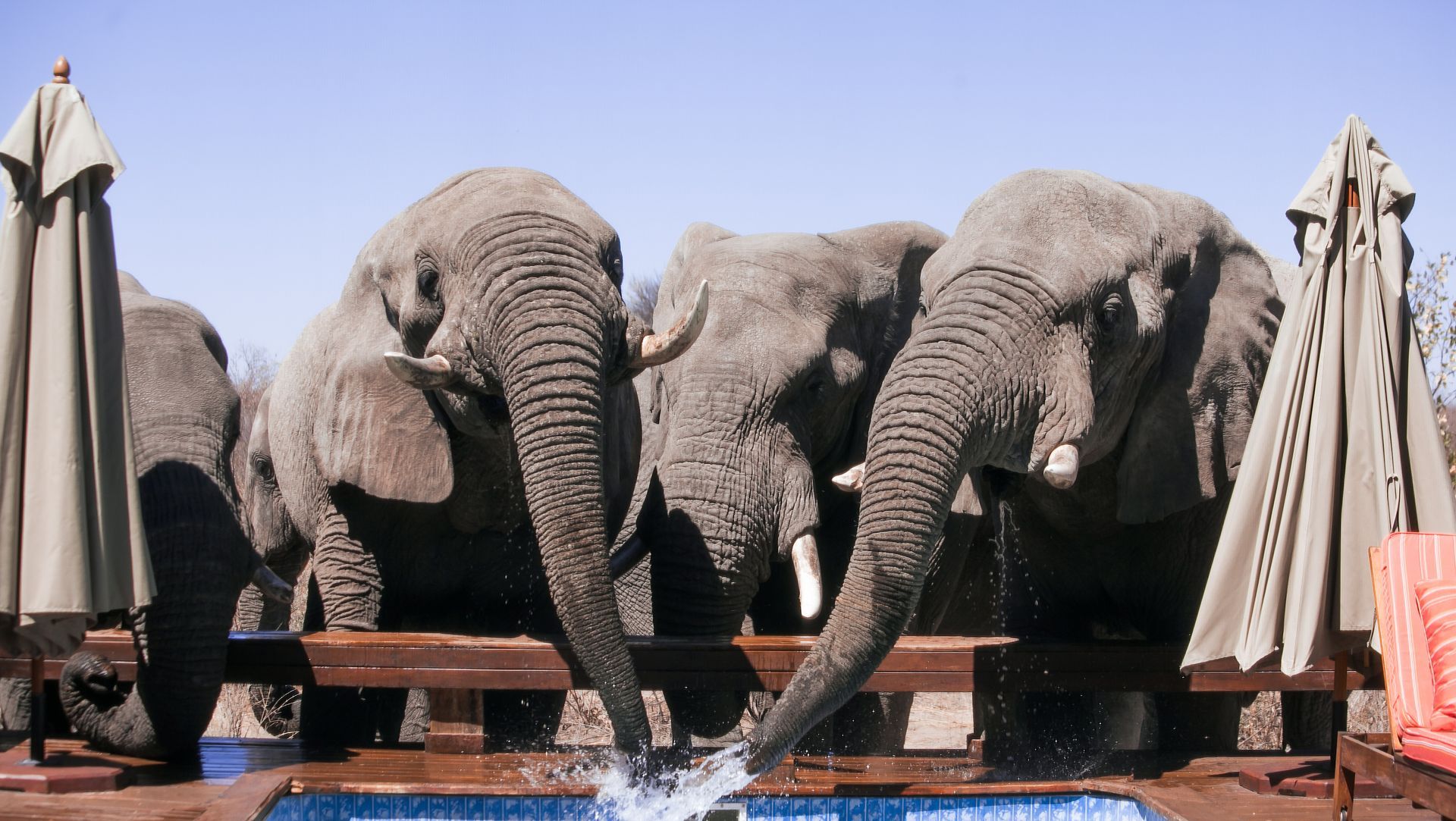
Elephant
We've experienced regular sightings of elephant both on the drive into the lodge and in and around the lodge over the years. It's always spectacular when they pay us a visit, sometimes drinking from the pools and moving through the bush around and in front of the lodge. We are hoping that the waterhole will attract them more regularly as they constantly move between water sources.
We know they're out there but not seen yet...
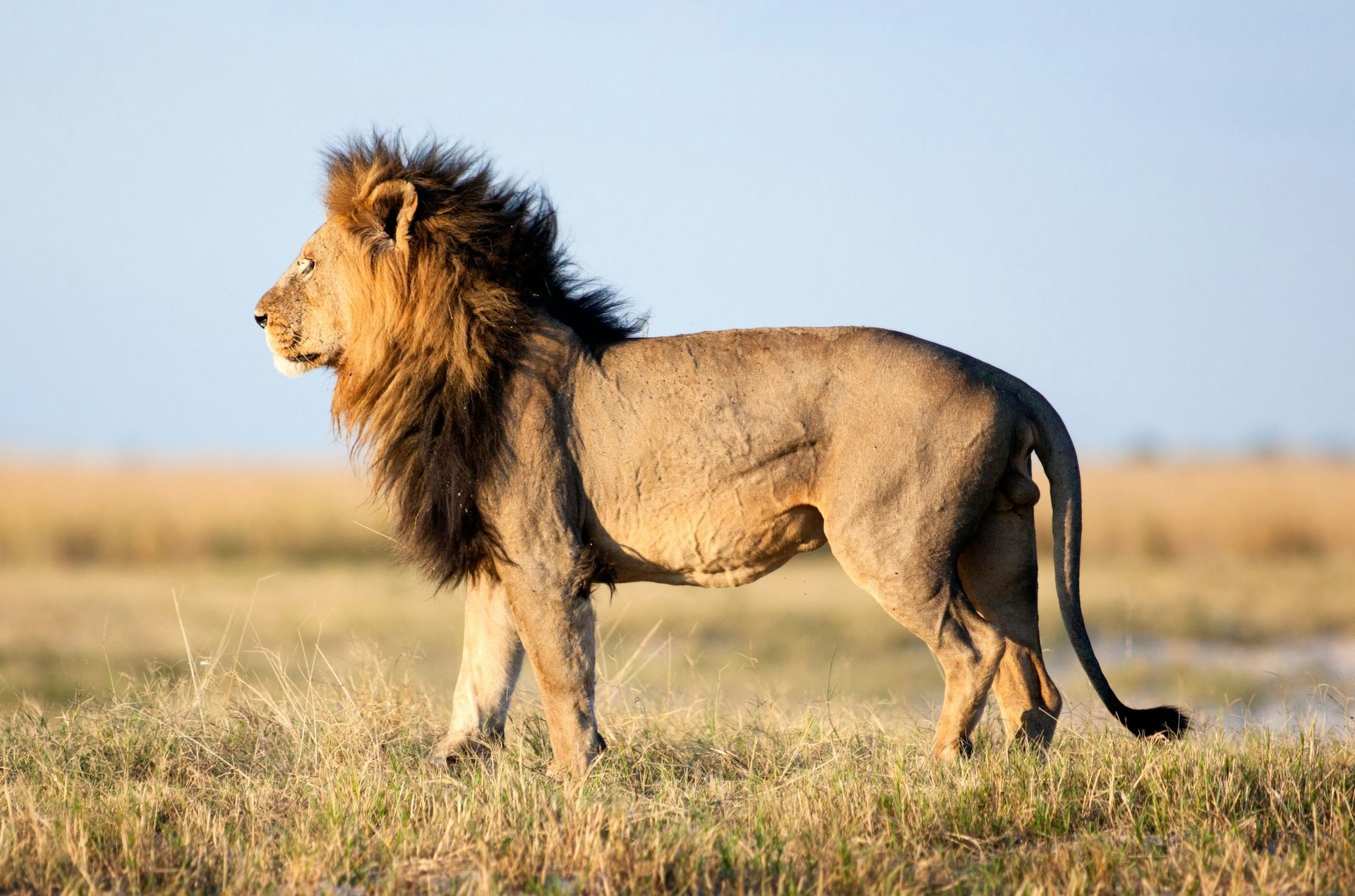
Lion
We've had frequent reports of lion in the area around the lodge, so we are hoping that it's only a matter of time before they discover the waterhole and start to become more regular visitors. As the number of prey species increases, most notably zebra, which we see from time to time, we are quite sure they will eventually grace us with their presence.
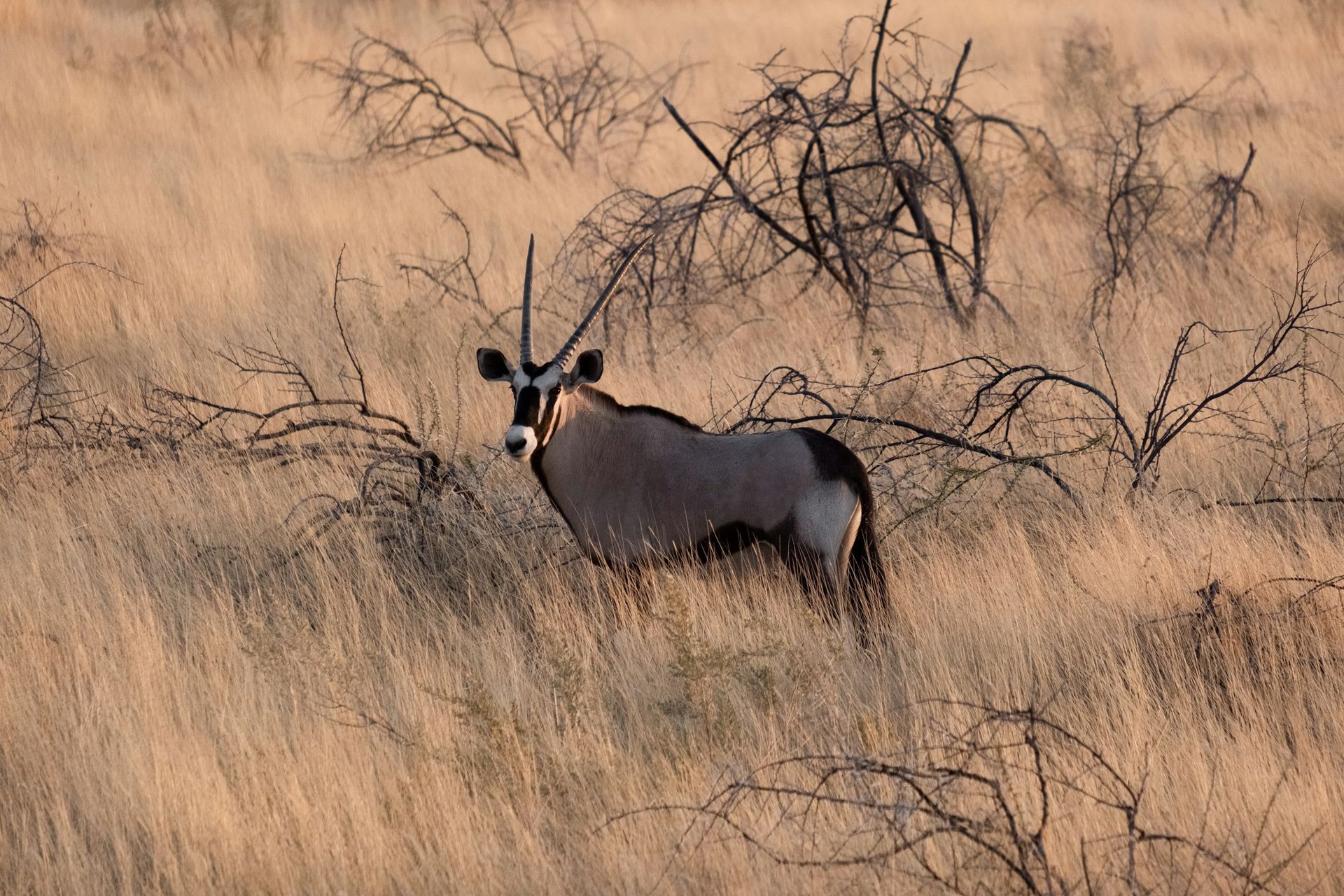
Gemsbok (Oryx)
With their dagger-like horns and sleek, two-toned coats, gemsbok are among the Kalahari’s most elegant and resilient residents. Perfectly adapted to their arid surroundings, gemsbok can go days without water, drawing moisture from the grasses and shrubs they consume. They are truly desert dwellers, capable of withstanding scorching daytime temperatures and surviving in areas devoid of permanent water sources. We hope to add them to our tick lists soon!
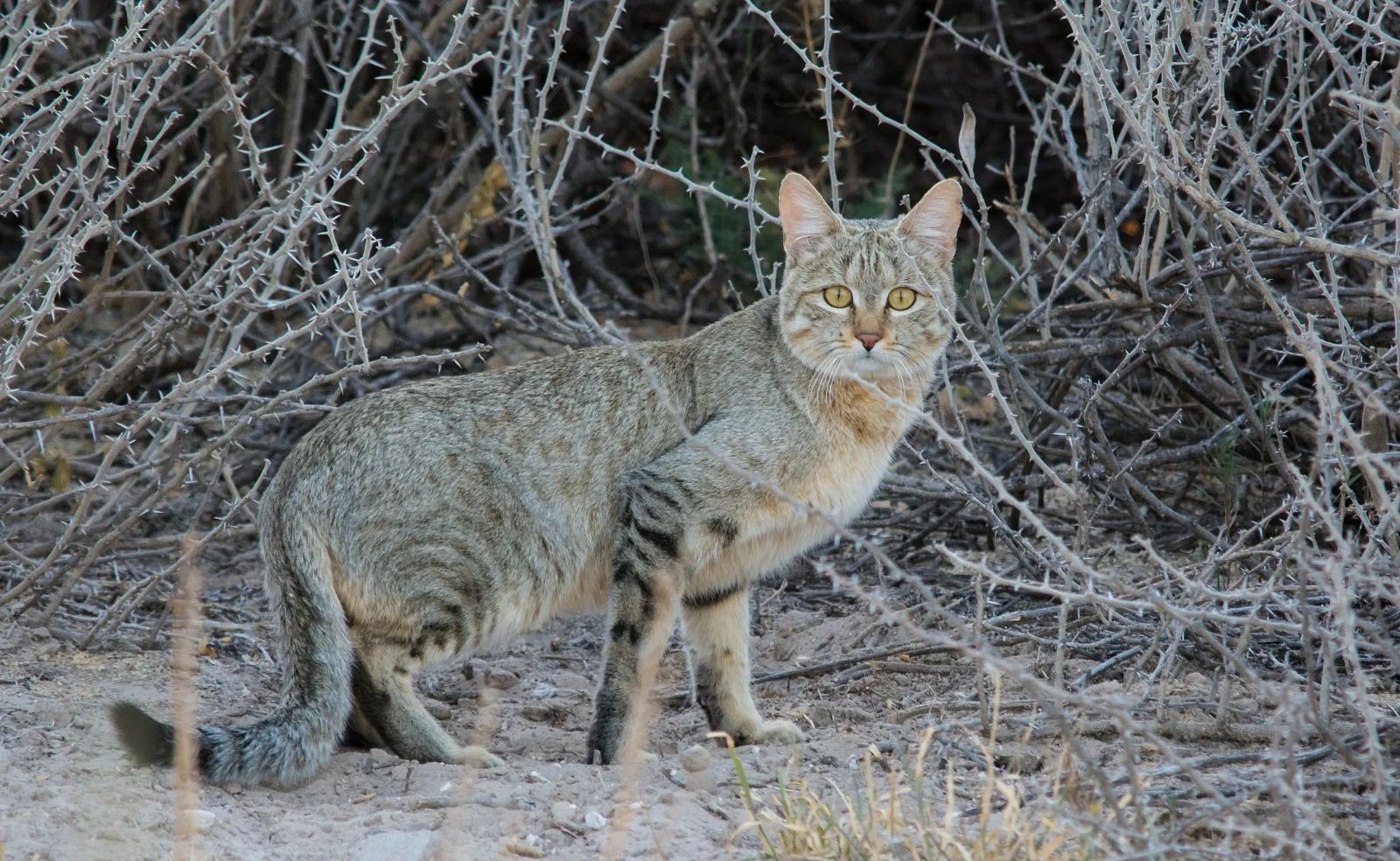
African wild cat
Often mistaken for domestic cats, African wild cats are far from tame. These small but formidable hunters are ancestors of the modern housecat, their survival skills honed by the desert environment. With a tawny coat that blends seamlessly with their surroundings, they are patient hunters, preying on small rodents, birds, and insects under the cover of darkness. Elusive and highly secretive, African wild cats are a rare but rewarding sight for those with a keen eye, representing a link to both the past and present in the feline lineage. We remain optimistic that we'll start seeing them soon!






